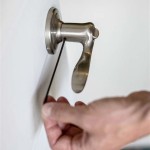Can Mold in My Bathroom Make Me Sick?
Mold growth within the bathroom environment is a common household problem. The bathroom, with its inherent humidity and moisture, provides an ideal breeding ground for various types of mold. Mold, a type of fungus, thrives in damp, poorly ventilated areas and reproduces through airborne spores. While not all molds are toxic, their presence can trigger a range of health problems, particularly in individuals with pre-existing respiratory conditions, allergies, or weakened immune systems. Understanding the potential health risks associated with bathroom mold is crucial for maintaining a healthy living environment.
The proliferation of mold within a bathroom often stems from consistently high humidity levels following showers or baths, inadequate ventilation, and water leaks. Cracks in grout, leaky faucets, and condensation buildup all contribute to creating the damp conditions that mold favors. Common areas where mold can be found include shower stalls, tile grout, behind toilets, under sinks, and on ceilings. Identifying the presence of mold early and addressing the underlying moisture issues are essential steps in preventing its spread and minimizing any potential health risks.
Understanding the Types of Mold Commonly Found in Bathrooms
Several types of mold are frequently encountered in bathroom settings. These molds vary in appearance, growth patterns, and potential health effects. While visual identification can provide an initial indication of mold presence, laboratory testing is often necessary for accurate identification and assessment of the specific risks involved.
One common type is *Cladosporium*, which typically appears as black or green spots on surfaces. It can grow on a wide range of materials and is relatively harmless for most people, although it can trigger allergic reactions in sensitive individuals. Another prevalent type is *Aspergillus*, which can exhibit a variety of colors, including green, yellow, and brown. Certain species of *Aspergillus* can produce mycotoxins, which are toxic compounds that can pose health risks, particularly through inhalation.
*Penicillium* is another mold often found in bathrooms, identifiable by its bluish-green color. Like *Aspergillus*, some *Penicillium* species produce mycotoxins. *Stachybotrys chartarum*, often referred to as "black mold," is perhaps the most widely known and feared type of mold. It produces potent mycotoxins and is associated with more severe health problems, although its presence is less common than other types of mold mentioned. However, it thrives in cellulose rich materials such as drywall. It is important to note that all molds should be treated with caution, regardless of their classification, and that professional remediation may be required for extensive or persistent mold growth.
The specific health risks associated with mold exposure depend on several factors, including the type of mold, the concentration of spores in the air, the duration of exposure, and the individual's susceptibility. Some people are more sensitive to mold than others, and their reactions may vary from mild symptoms to more severe health problems.
Health Effects Associated with Bathroom Mold Exposure
Exposure to bathroom mold can trigger a range of health issues, primarily affecting the respiratory system and immune system. The severity of these effects depends on individual susceptibility, the type and concentration of mold present, and the duration of exposure. Common symptoms include allergic reactions, respiratory problems, and in some cases, more serious health complications.
Allergic reactions are among the most common responses to mold exposure. Symptoms can include sneezing, runny nose, itchy eyes, skin rashes, and hives. These reactions occur when the immune system overreacts to mold spores, releasing histamine and other chemicals that cause inflammation. Individuals with pre-existing allergies, such as hay fever or asthma, are often more susceptible to mold allergies.
Respiratory problems are another significant concern related to mold exposure. Mold spores can irritate the airways, leading to coughing, wheezing, shortness of breath, and chest tightness. People with asthma or other respiratory conditions are particularly vulnerable to these effects. In some cases, mold exposure can trigger asthma attacks or worsen existing respiratory symptoms. Chronic exposure to mold can also lead to the development of new respiratory problems, such as hypersensitivity pneumonitis, an inflammation of the lungs caused by an allergic reaction to inhaled substances.
In rare cases, exposure to certain types of mold, particularly those that produce mycotoxins, can lead to more serious health problems. Mycotoxins are toxic compounds that can cause a variety of adverse health effects, including neurological problems, immune suppression, and even cancer. However, the link between mycotoxin exposure and these serious health problems is still being researched, and more studies are needed to fully understand the risks.
In addition to allergic and respiratory problems, mold exposure can also cause other less specific symptoms, such as headaches, fatigue, dizziness, and difficulty concentrating. These symptoms can be difficult to attribute directly to mold exposure, as they can also be caused by other factors. However, if these symptoms occur in conjunction with other signs of mold exposure, such as a musty odor or visible mold growth, it is important to consider mold as a potential cause.
Infants and young children are often more susceptible to the health effects of mold exposure due to their developing immune systems and smaller airways. Exposure to mold in early childhood has been linked to an increased risk of developing asthma and other respiratory problems later in life. Similarly, elderly individuals and people with weakened immune systems are also at higher risk of experiencing adverse health effects from mold exposure.
Preventing and Remediating Mold Growth in Bathrooms
Preventing mold growth is always preferable to remediating it. Proactive measures to control humidity, ensure adequate ventilation, and address water leaks are crucial for maintaining a mold-free bathroom environment. Regular cleaning and maintenance can also help to prevent mold from taking hold.
Ventilation is a critical factor in preventing mold growth. Bathrooms should be equipped with exhaust fans that are used during and after showers or baths to remove excess moisture from the air. If an exhaust fan is not available, opening a window can provide temporary ventilation. Ensuring that the bathroom is well-ventilated helps to prevent the buildup of humidity that mold thrives on.
Controlling humidity levels is another important step in preventing mold growth. Wiping down wet surfaces in the shower or bath area after each use can significantly reduce moisture buildup. Addressing any water leaks promptly, whether from leaky faucets, showerheads, or pipes, is also essential. Consider using a dehumidifier in the bathroom to further reduce humidity levels, particularly in areas with poor ventilation.
Regular cleaning and maintenance are also crucial for preventing mold growth. Clean bathroom surfaces regularly with a mold-killing cleaner to remove any existing mold and prevent new growth. Pay particular attention to areas that are prone to moisture buildup, such as shower stalls, tile grout, and under sinks. Inspect and clean grout regularly, and repair any cracks or damage to prevent water from seeping behind tiles.
If mold is already present, remediation may be necessary. Small areas of mold growth can often be cleaned with a bleach solution (one part bleach to ten parts water) or a commercial mold remover. However, it is important to wear protective gear, such as gloves, a mask, and eye protection, when cleaning mold to avoid inhaling spores or coming into contact with irritants. Ensure adequate ventilation during the cleaning process.
For larger areas of mold growth (more than 10 square feet), or if you are unsure about the type of mold present, it is best to consult a professional mold remediation company. These companies have the expertise and equipment to safely and effectively remove mold and address the underlying moisture issues that are contributing to its growth. Professional mold remediation may involve removing affected materials, such as drywall or flooring, and disinfecting the area to prevent future mold growth.
After mold remediation, it is important to address the underlying causes of the mold growth to prevent it from returning. This may involve repairing water leaks, improving ventilation, or adjusting humidity levels. Regular monitoring and maintenance are also essential to ensure that the mold does not reappear. By taking proactive steps to prevent and remediate mold growth, you can create a healthier bathroom environment and protect yourself and your family from the potential health risks associated with mold exposure.

What To Know About Bathroom Mold And When You Should Worry

Black Mold In Shower Is It A Cause Of Worry And What To Do About Aqa

Can Mold In My Home Make Me Sick Onere
Can Toxic Black Mold Grow On Ceramic Bathtub Find Out Now

Mold Exposure Symptoms And Health Implications Rapid Restoration

How Long Does It Take To Get Sick From Mold Exposure

Is A Mold Problem In Your Home Making You Sick

Symptoms Of Mold Exposure In House And More

What To Do If You Find Toxic Black Mold Safewise Com

What Is Black Mould And Health Problems Can It Cause Fungi The Guardian
Related Posts







